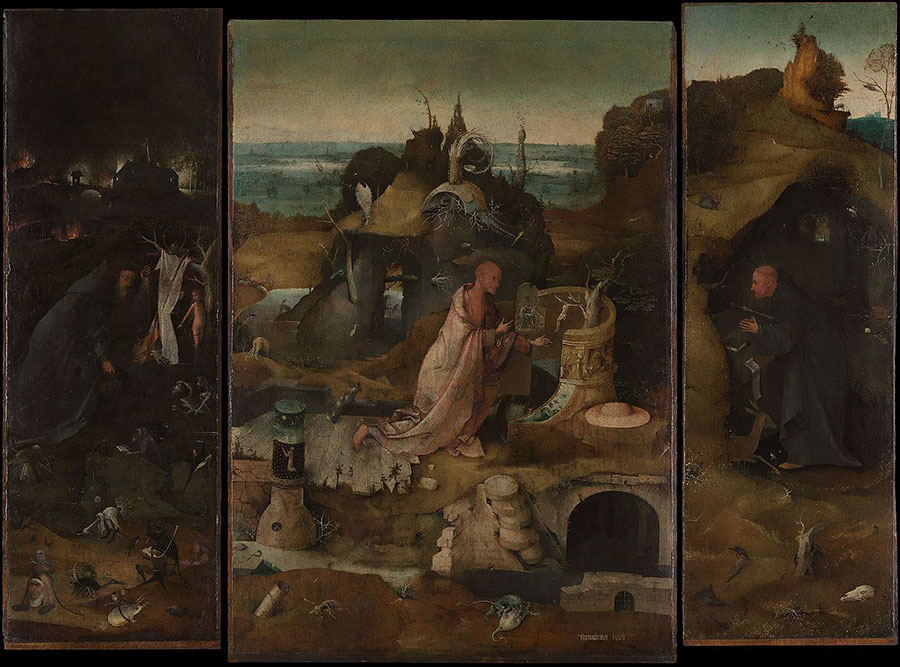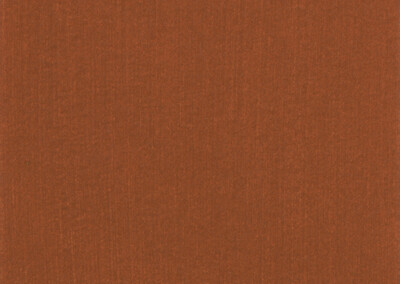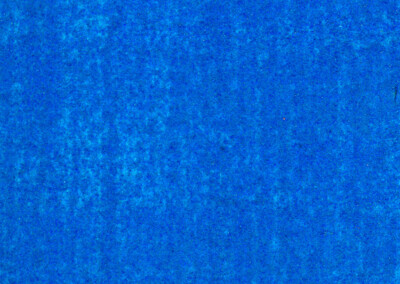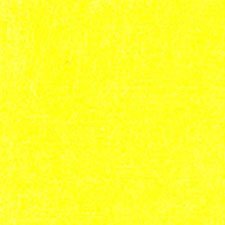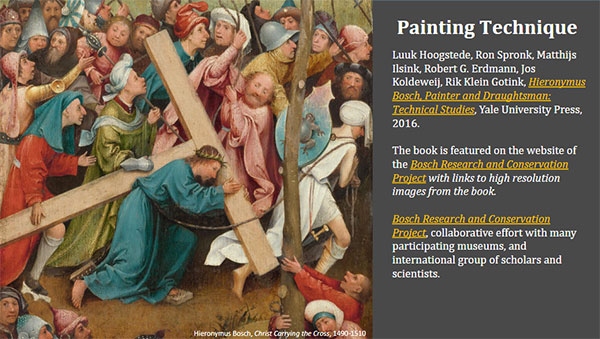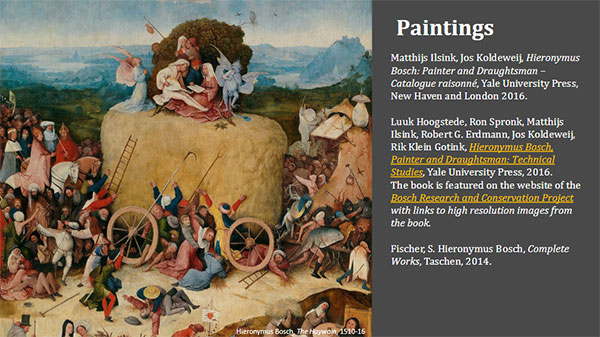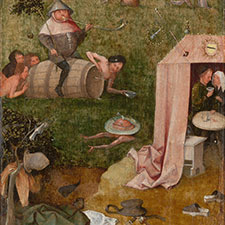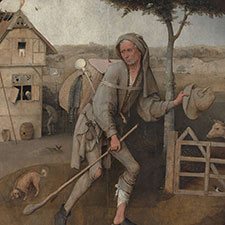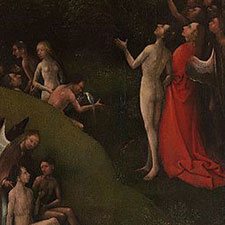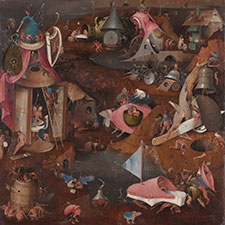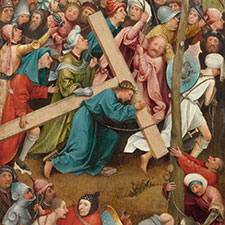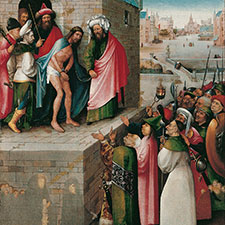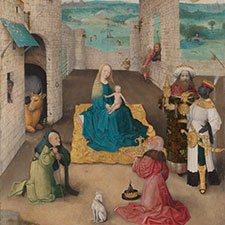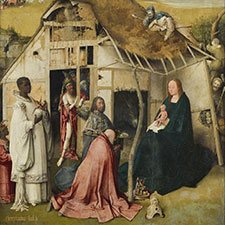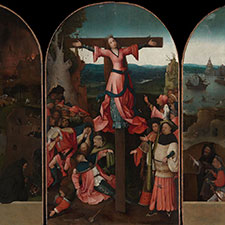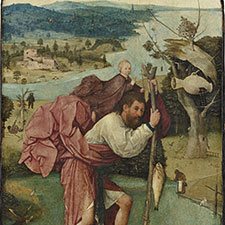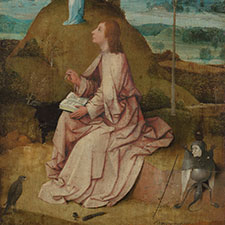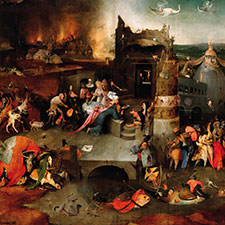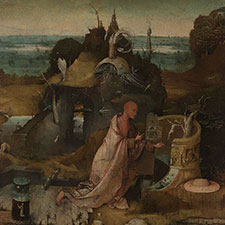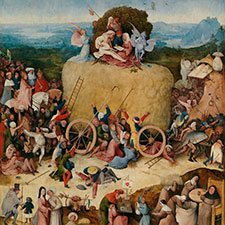Hieronymus Bosch, Hermit Saints Triptych
ca 1495-1505Paintings sorted by Historical period | Painter | Subject matter | Pigments used
Overview
The ‘Hermit Saints Triptych’ consists of three parts: the left panel shows Saint Anthony the Abbot in a nocturnal landscape with a burning village. The center panel depicts Saint Jerome praying in the desert. The right panel depicts Saint Giles praying in the grotto where he was shot with an arrow.
The triptych was thoroughly investigated by The Bosch Research and Conservation Project. The results of this investigation were published in a magnificent book referenced below. An extensive interactive online feature at the website of the project complements the book and shows all the images from the book in high resolution.
The pigment analysis reveals a limited palette consisting of the cheaper pigments employed in the Renaissance period, such as azurite, lead-tin yellow, vermilion, and brown ochre.
Medium: Oil
Support: Oak
Size: 86.5 cm x 120 cm
Art Period: Renaissance
Gallerie dell’Accademia, Venice
Painting at the Bosch Research and Conservation Project
Pigments
Pigment Analysis
This pigment analysis is based on the work of the scientists at The Bosch Research and Conservation Project (1, 2). The scientists employed x-ray radiography (XRR), infrared photography (IRP) and infrared reflectography (IRR) to gain insights into the inner layers of the painting and to identify the pigments. Both the infrared reflectogram and x-radiograph can be viewed in a special interactive viewer in high resolution at the website of The Bosch Research and Conservation Project.
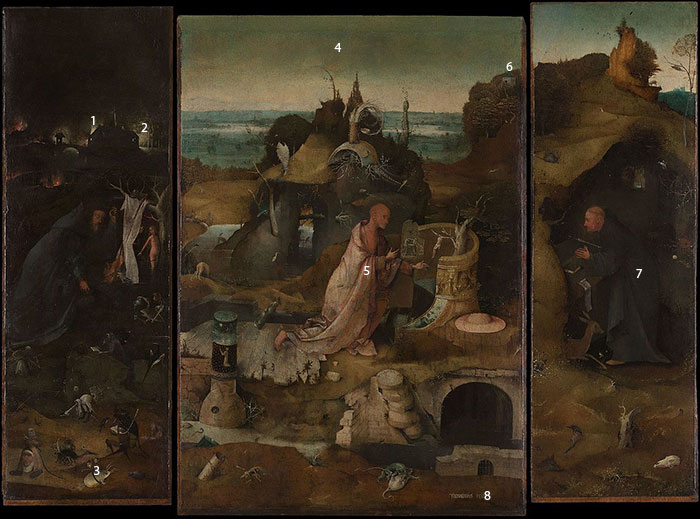
Left Panel: ‘Saint Anthony’
1 Fire behind the building: vermilion, lead-tin yellow, and red lake with some local blue-grey accents.
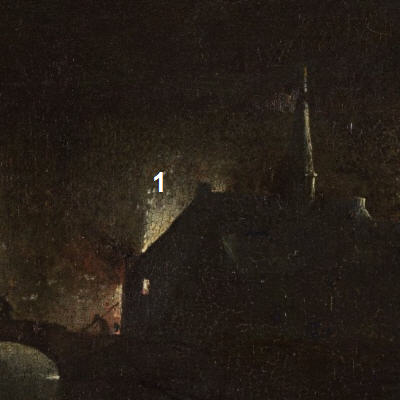
2 Trees illuminated by the fire: grey underpaint with highlights in lead white and some lead-tin yellow.
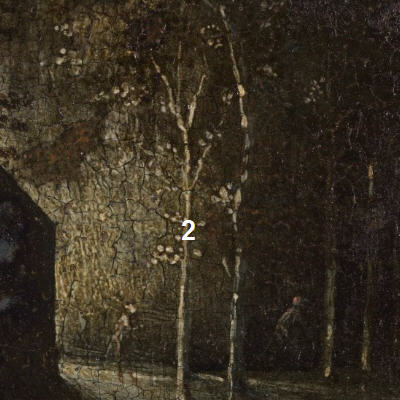
3 Animal at bottom center: the wings are painted in lead-tin yellow, the tail, whiskers, and antennae are done in lead white.
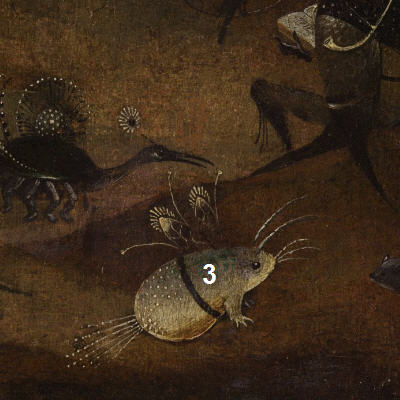
Center Panel: ‘Saint Jerome’
4 Blue sky: azurite and lead white in varying proportions.
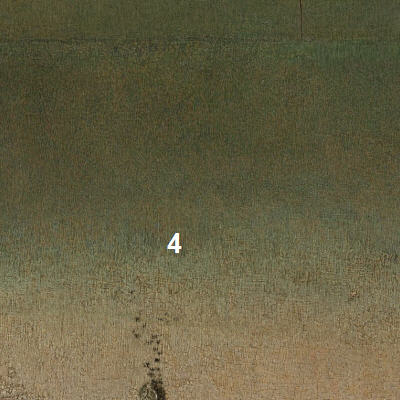
5 Saint Jerome’s red robe: red glaze.
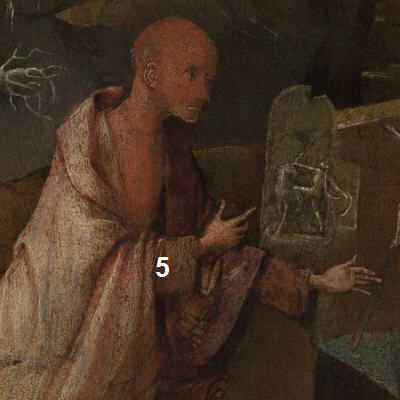
6 Green roof: possibly green glaze.
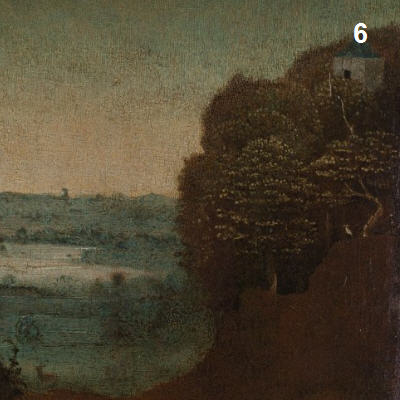
Right Panel: ‘Saint Giles’
7 Saint Giles’s brownish cloak: brown ochre, black and lead white.
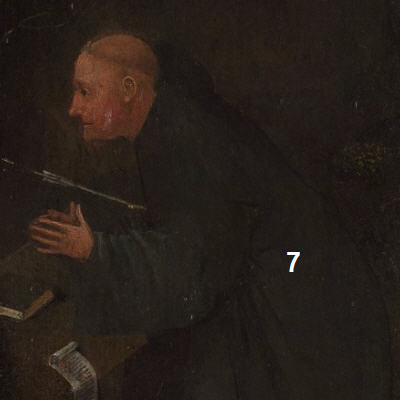
8 Signature: lead-tin yellow
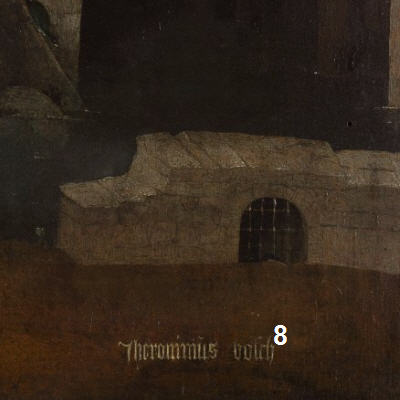
References
(1) Luuk Hoogstede, Ron Spronk, Matthijs Ilsink, Robert G. Erdmann, Jos Koldeweij, Rik Klein Gotink, Hieronymus Bosch, Painter and Draughtsman: Technical Studies, Yale University Press, 2016, pp. 66 – 81.
(2) Hieronymus Bosch, Hermit Saints Triptych, Website of The Bosch Research and Conservation Project. The painting can be viewed in a special viewer in high resolution with an interactive feature showing the image not only in visible light but also as an https://yalebooks.yale.edu/book/9780300220155/hieronymus-bosch-painter-and-draughtsman/infrared reflectogram and x-radiograph.
Pigments Used in This Painting
Resources
See the collection of online and offline resources such as books, articles, videos, and websites on Hieronymus Bosch in the section ‘Resources on Painters‘
PowerPoint Presentations
Painter in Context: Hieronymus Bosch
A richly illustrated presentation on the painting technique and pigments employed by Hieronymus Bosch specially crafted for Art Education. (Number of Slides = 20)
- Each presentation starts with the basic resources on the painter such as his biography, main catalogs of his paintings, and a bibliography.
- Next, you find slides describing the painting technique of the artist and the pigments he usually employed in his work.
- The majority of the slides show examples of paintings containing the specific pigments.
Slides showing the basic resources on the life and works of the Northern Renaissance painter Hieronymus Bosch.
The painting technique and all pigments employed by Bosch are shown in the next slides.
The majority of the slides show important examples of paintings where Bosch employed specific pigments. The slides are organized according to the color of the pigments.
Publications and Websites
Publications
(1) An interpretation of the iconography of Saint Giles in this triptych based on the Golden Legend written in the tenth century is given in Hieronymus Bosch’s Saint Giles within the Hermit Saints triptych, Journal of Undergraduate Research, Brigham Young University, January 22, 2014.
(2) Matthijs Ilsink, Jos Koldeweij, Hieronymus Bosch: Painter and Draughtsman – Catalogue raisonné, Yale University Press, New Haven and London; 2016. pp 122-131.
(3) Luuk Hoogstede, Ron Spronk, Matthijs Ilsink, Robert G. Erdmann, Jos Koldeweij, Rik Klein Gotink, Hieronymus Bosch, Painter and Draughtsman: Technical Studies, Yale University Press, 2016, pp. 296 – 313.
Both above books are also available online in pdf format in two parts: part I and part II.
(4) Daniel Mc Dermon, Art Gone to Hell: A Boschian Bestiary, The New York Times online, March 4, 2016.
Websites
Website of the Bosch Project
Website of the Bosch Research and Conservation Project
Hieronymus Bosch, Hermit Saints Triptych, Website of The Bosch Research and Conservation Project. The painting can be viewed in an interactive viewer in high resolution showing the image not only in visible light but also as an infrared reflectogram and x-radiograph.

